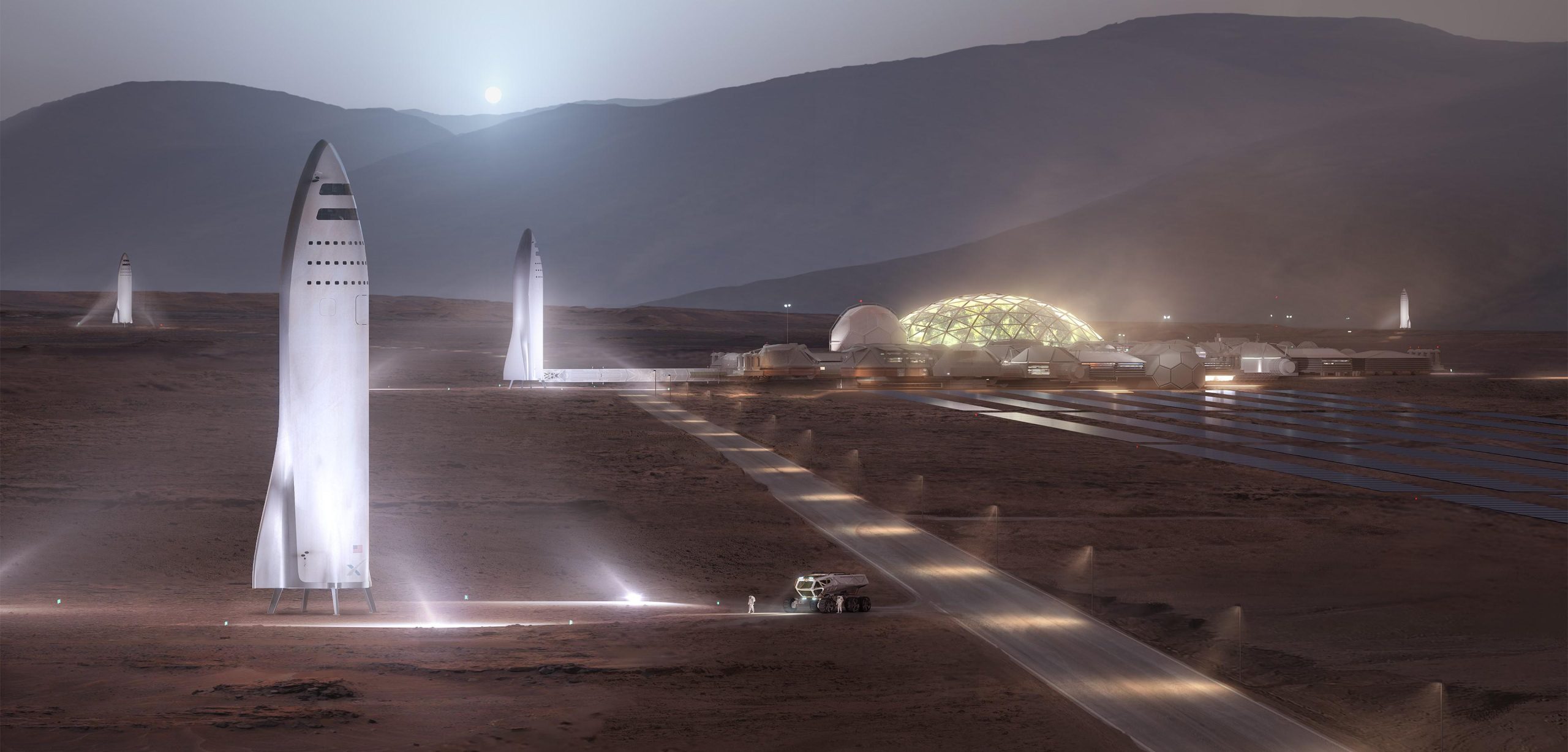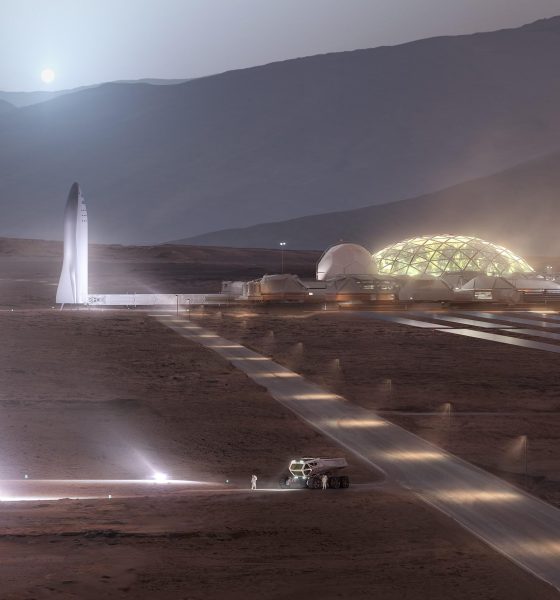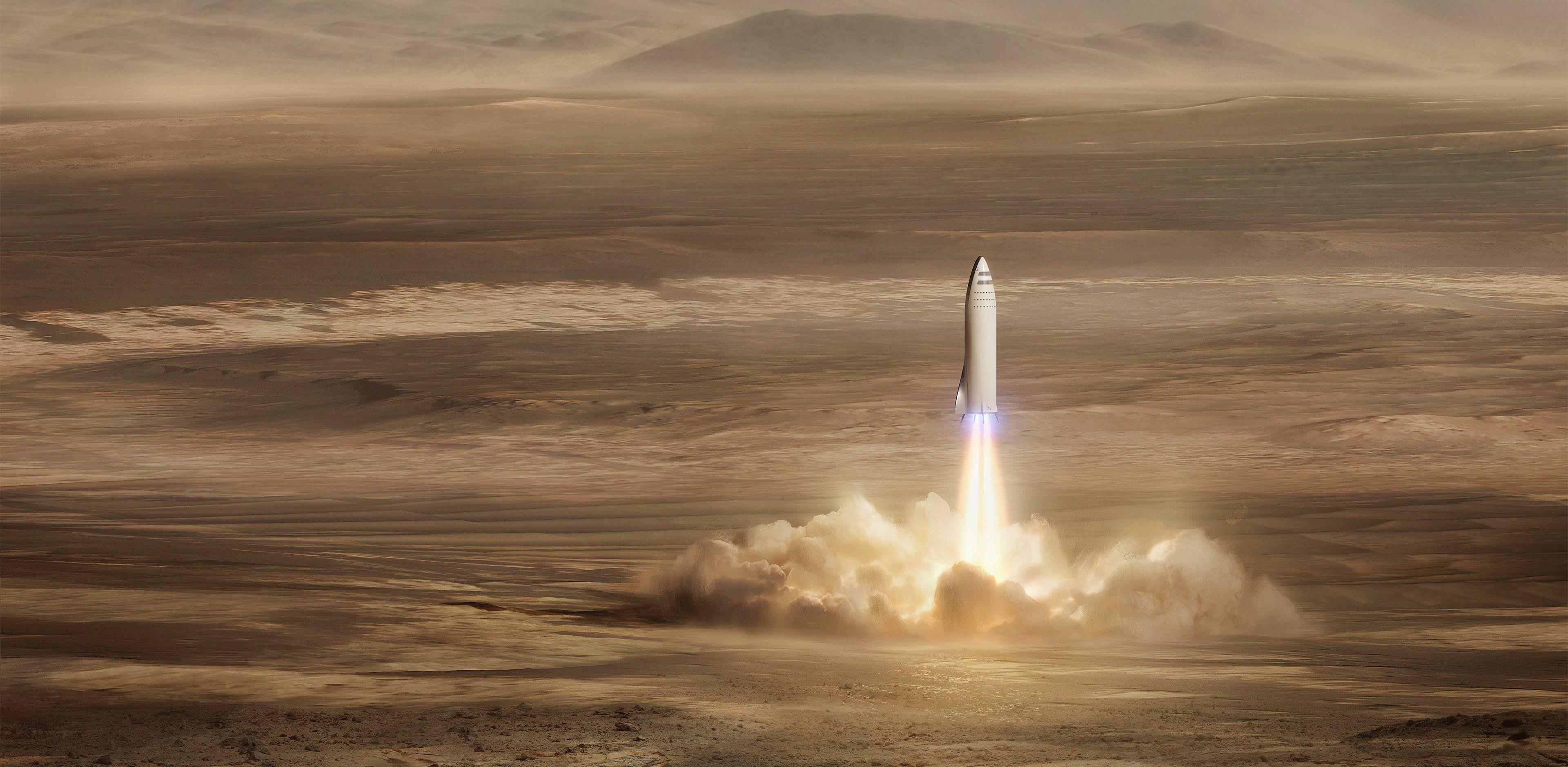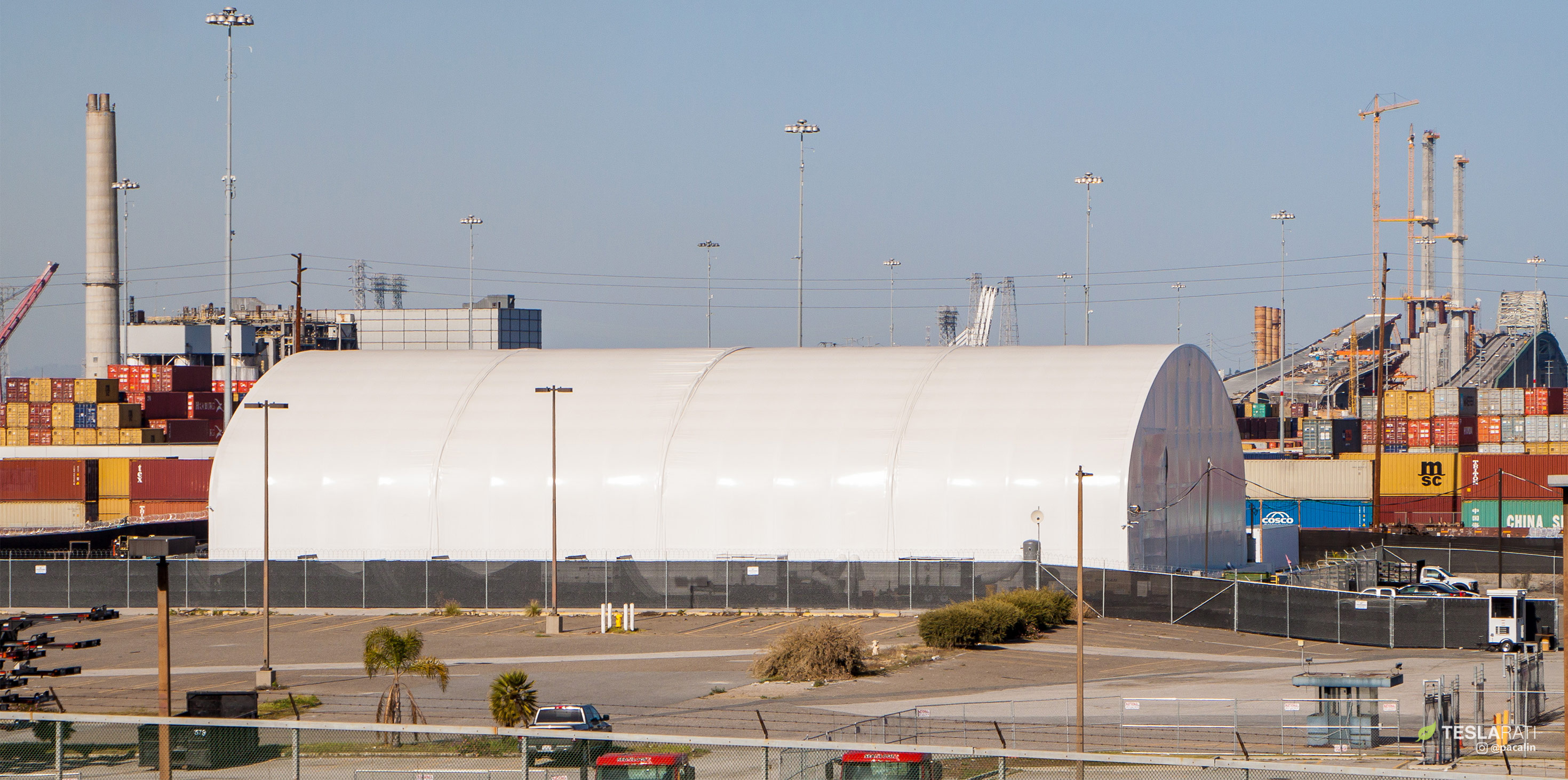

News
SpaceX is searching for BFR landing sites for early 2020s Mars missions
SpaceX Principal Mars Development Engineer Paul Wooster gave a surprise talk at a February 2018 meeting of the Mars Exploration Program Analysis Group, where he provided a brief overview of SpaceX’s plans for the Red Planet, ranging from prospective landing sites for the company’s first missions there to the possibility of including significant secondary payloads on BFR and Falcon Heavy launches.
Wooster reiterated that SpaceX is still targeting the early 2020s for its first true BFR missions to Mars, perhaps less than five years from today. He further discussed prospective landing locations on the planet, emphasizing a need for a smooth landing site, easy access to on or near-surface water ice, and a preference for the warmer and more forgiving mid and low (equatorial) latitudes. A huge amount of work admittedly remains before the company before those missions are even remotely conceivable, especially missions with crew onboard.

If/when SpaceX successfully debuts its Crew Dragon spacecraft and demonstrates the ability to reliably and safely transport humans to and from orbit, a huge amount of the risk currently innate in any long-term interplanetary transport and colony creation will be definitively retired, transforming several of the major problems at hand from clean-slate tech development to optimizing and scaling up functional first-generation designs and hardware.
Crew Dragon’s official uncrewed demonstration debut (DM-1) and perhaps the crewed demonstration follow-on mission (DM-2) will likely have real launch dates announced later this week in an August 3 NASA press conference. Reliable sources have pegged those dates around October-December for DM-1 and 3-6 months later for DM-2
- SpaceX’s gorgeous Crew Dragon capsule is nearing its own debut, likely before the end of 2018. (SpaceX)
- The first spaceworthy Crew Dragon capsule is already in Florida, preparing for its November 2018 launch debut. The same capsule will be refurbished and reflown as few as three months after recovery. (SpaceX)
- Note that Merlin 1D and prior Raptor prototypes both feature traditional single nozzles. (Pauline Acalin)
Nevertheless, SpaceX is demonstrably hard at work designing and building BFR‘s booster, spaceship, and tanker and is moving quickly in the direction of full-scale engineering and production. Much of that prototype manufacturing happens to be taking place in a temporary tent installed in a Port of Los Angeles parking lot near the end of 2017. According to one source engaged in the work there, SpaceX technicians and engineers have already begun rolling out preliminary materials and engineering samples of carbon composite structures and propellant tanks with the massive manufacturing tools (one known as a mandrel) temporarily housed inside.

Just a few miles away, the company is busy preparing a construction site for a permanent BFR factory on a plot of Port of Los Angeles land known as Berth 240. The smaller Phase 1 of that BFR factory is expected to be completed roughly a year after construction begins, placing the inauguration of the dedicated facility sometime around the middle of 2019. Suborbital launches of the massive rocket’s upper stage spaceship are expected in 2019, while orbital launches of BFR are NET 2020.
Read the full summary of Mr. Wooster’s presentation below.
“A walk-on presentation was given by Paul Wooster of SpaceX which highlighted the recent successful test of the Falcon Heavy launch vehicle with its potentially very large payload capacity (100 metric tons). Using the Falcon Heavy and development of an even larger Big Falcon Rocket (BFR) launcher are the basis of their ambitious plans for the future exploration and colonization of Mars, potentially launching missions to Mars within the early 2020s. SpaceX’s current landing site candidates for Mars were shown, having been chosen to provide access to near-surface ice, few landing site hazards (such as large rocks), and enough space for potentially growing a sizeable outpost. The ice sites are in high mid-latitudes and the search for lower latitude candidates, which are preferred, continues. Previously, MEPAG had been told that SpaceX could transport for-fee payloads to the Mars surface. In response to questions, Paul iterated that there is likely to be capacity for secondary payloads on either the Falcon Heavy or BFR launchers, although details remain to be negotiated once the launcher capabilities are firmly established.”
For prompt updates, on-the-ground perspectives, and unique glimpses of SpaceX’s rocket recovery fleet (including fairing catcher Mr Steven) check out our brand new LaunchPad and LandingZone newsletters!

News
Tesla FSD fleet is nearing 7 billion total miles, including 2.5 billion city miles
As can be seen on Tesla’s official FSD webpage, vehicles equipped with the system have now navigated over 6.99 billion miles.

Tesla’s Full Self-Driving (Supervised) fleet is closing in on almost 7 billion total miles driven, as per data posted by the company on its official FSD webpage.
These figures hint at the massive scale of data fueling Tesla’s rapid FSD improvements, which have been quite notable as of late.
FSD mileage milestones
As can be seen on Tesla’s official FSD webpage, vehicles equipped with the system have now navigated over 6.99 billion miles. Tesla owner and avid FSD tester Whole Mars Catalog also shared a screenshot indicating that from the nearly 7 billion miles traveled by the FSD fleet, more than 2.5 billion miles were driven inside cities.
City miles are particularly valuable for complex urban scenarios like unprotected turns, pedestrian interactions, and traffic lights. This is also the difference-maker for FSD, as only complex solutions, such as Waymo’s self-driving taxis, operate similarly on inner-city streets. And even then, incidents such as the San Francisco blackouts have proven challenging for sensor-rich vehicles like Waymos.
Tesla’s data edge
Tesla has a number of advantages in the autonomous vehicle sector, one of which is the size of its fleet and the number of vehicles training FSD on real-world roads. Tesla’s nearly 7 billion FSD miles then allow the company to roll out updates that make its vehicles behave like they are being driven by experienced drivers, even if they are operating on their own.
So notable are Tesla’s improvements to FSD that NVIDIA Director of Robotics Jim Fan, after experiencing FSD v14, noted that the system is the first AI that passes what he described as a “Physical Turing Test.”
“Despite knowing exactly how robot learning works, I still find it magical watching the steering wheel turn by itself. First it feels surreal, next it becomes routine. Then, like the smartphone, taking it away actively hurts. This is how humanity gets rewired and glued to god-like technologies,” Fan wrote in a post on X.
News
Tesla starts showing how FSD will change lives in Europe
Local officials tested the system on narrow country roads and were impressed by FSD’s smooth, human-like driving, with some calling the service a game-changer for everyday life in areas that are far from urban centers.

Tesla has launched Europe’s first public shuttle service using Full Self-Driving (Supervised) in the rural Eifelkreis Bitburg-Prüm region of Germany, demonstrating how the technology can restore independence and mobility for people who struggle with limited transport options.
Local officials tested the system on narrow country roads and were impressed by FSD’s smooth, human-like driving, with some calling the service a game-changer for everyday life in areas that are far from urban centers.
Officials see real impact on rural residents
Arzfeld Mayor Johannes Kuhl and District Administrator Andreas Kruppert personally tested the Tesla shuttle service. This allowed them to see just how well FSD navigated winding lanes and rural roads confidently. Kruppert said, “Autonomous driving sounds like science fiction to many, but we simply see here that it works totally well in rural regions too.” Kuhl, for his part, also noted that FSD “feels like a very experienced driver.”
The pilot complements the area’s “Citizen Bus” program, which provides on-demand rides for elderly residents who can no longer drive themselves. Tesla Europe shared a video of a demonstration of the service, highlighting how FSD gives people their freedom back, even in places where public transport is not as prevalent.
What the Ministry for Economic Affairs and Transport says
Rhineland-Palatinate’s Minister Daniela Schmitt supported the project, praising the collaboration that made this “first of its kind in Europe” possible. As per the ministry, the rural rollout for the service shows FSD’s potential beyond major cities, and it delivers tangible benefits like grocery runs, doctor visits, and social connections for isolated residents.
“Reliable and flexible mobility is especially vital in rural areas. With the launch of a shuttle service using self-driving vehicles (FSD supervised) by Tesla in the Eifelkreis Bitburg-Prüm, an innovative pilot project is now getting underway that complements local community bus services. It is the first project of its kind in Europe.
“The result is a real gain for rural mobility: greater accessibility, more flexibility and tangible benefits for everyday life. A strong signal for innovation, cooperation and future-oriented mobility beyond urban centers,” the ministry wrote in a LinkedIn post.
News
Tesla China quietly posts Robotaxi-related job listing
Tesla China is currently seeking a Low Voltage Electrical Engineer to work on circuit board design for the company’s autonomous vehicles.

Tesla has posted a new job listing in Shanghai explicitly tied to its Robotaxi program, fueling speculation that the company is preparing to launch its dedicated autonomous ride-hailing service in China.
As noted in the listing, Tesla China is currently seeking a Low Voltage Electrical Engineer to work on circuit board design for the company’s autonomous vehicles.
Robotaxi-specific role
The listing, which was shared on social media platform X by industry watcher @tslaming, suggested that Tesla China is looking to fill the role urgently. The job listing itself specifically mentions that the person hired for the role will be working on the Low Voltage Hardware team, which would design the circuit boards that would serve as the nervous system of the Robotaxi.
Key tasks for the role, as indicated in the job listing, include collaboration with PCB layout, firmware, mechanical, program management, and validation teams, among other responsibilities. The role is based in Shanghai.
China Robotaxi launch
China represents a massive potential market for robotaxis, with its dense urban centers and supportive policies in select cities. Tesla has limited permission to roll out FSD in the country, though despite this, its vehicles have been hailed as among the best in the market when it comes to autonomous features. So far, at least, it appears that China supports Tesla’s FSD and Robotaxi rollout.
This was hinted at in November, when Tesla brought the Cybercab to the 8th China International Import Expo (CIIE) in Shanghai, marking the first time that the autonomous two-seater was brought to the Asia-Pacific region. The vehicle, despite not having a release date in China, received a significant amount of interest among the event’s attendees.











